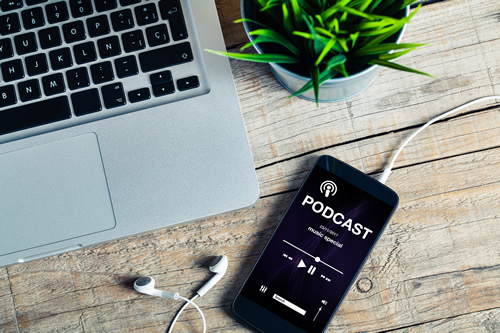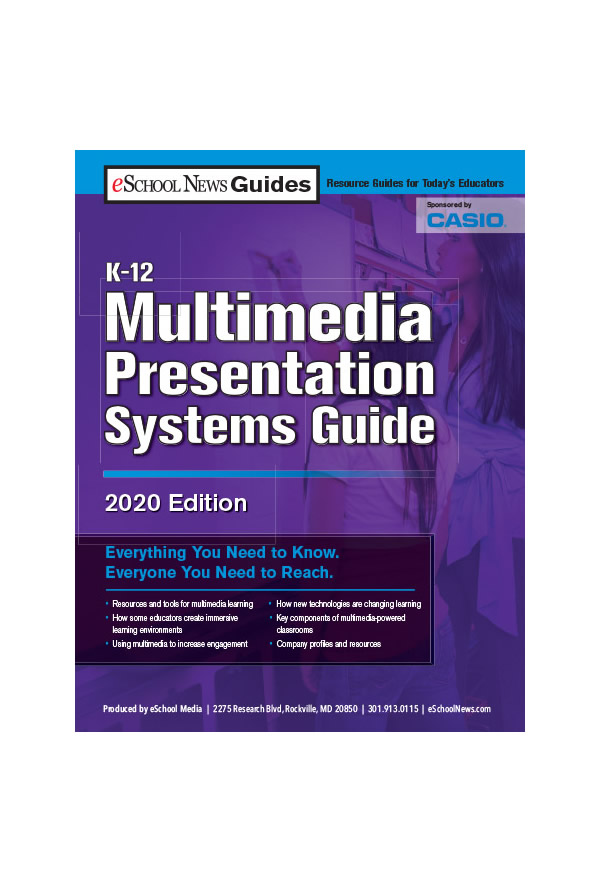I’m going to confess, I did not bring podcasts into my English classroom with any intention of improving my students’ literacy skills. The idea came from a more selfish place: My wife and I were enthralled by the first few episodes of Serial, and I wanted to share our excitement for the amazing story with my students. Like almost everybody, they were hooked by the pilot episode and begged me for more.
Using Serial turned out to be a huge academic success for a variety of reasons, most of them related to critical thinking, listening comprehension, and the art of storytelling. While I felt guilty that the students weren’t doing as much reading from a traditional text, they voluntarily studied maps, evaluated clues, argued with each other, and wrote twice as much in their journals as they previously had. Perhaps most satisfying to me, they were engaging in adult conversations with teachers, parents, and administrators who were listening to the same podcast.
Related content: 6 ways to help students collaborate on awesome podcasts
I began using other podcast episodes and excerpts as both primary and supplemental texts. While I was teaching the concept of racial bias, my students were visibly moved by a This American Life episode called “Is This Working?” When I taught the differences among slander, libel, and defamation, they loved listening to Bill Simmons’ rant that led to his suspension from ESPN. All of this had a tremendous and visible effect on the students’ level of engagement, critical-thinking habits, and writing skills, but the traditional reading component was still missing.
Related Content:
eSchool News Multimedia Presentation Systems Guide
The eSchool News Multimedia Presentation Systems Guide is here! It features strategies to help you integrate engaging and media-rich tools into the classroom, and it offers a look at how these tools engage students and strengthen student voice. A new eSchool News Guide will launch each month–don’t miss a single one!
That’s why I’ll never forget when I projected the transcripts of Serial on the screen in front of the classroom and said something embarrassing like, “Here are the words, in case any of you care.” They definitely cared. They all turned their heads, and some of them immediately shifted their desks, and they all got mad whenever I was late in scrolling down. I felt pretty dumb—of course they liked the words. Ever since my five-year-old daughter learned the advanced functions on the remote control, she intentionally puts closed-captioning on her cartoons. People like reading the lyrics of their favorite songs. Even after hearing Serial 10 times, I still read along.
There were teachers far ahead of me with this discovery. Rich Hovey, who teaches English to at-risk high school students at Grizzly Youth Academy in California, let his students voluntarily read along with Serial, and they jumped on the opportunity. “It was thrilling,” Hovey said, “to watch them so focused on their reading, excitedly scrolling down on their Chromebooks.”
I started researching the links between listening habits and literacy acquisition, and many of the studies confirmed what I was observing in the classroom. For example, Emma Rodero’s study claims that a story told through dialogue “stimulates listeners’ attention” more than a traditional narration; or, as my student put it: “Listening to the words puts the visualization in my head.”
I now have a classroom full of students like Melissa, who says, “I like to listen to [a] story better, but I have to be able to read it at the same time.” The kids are now asking for these aforementioned “successful reading events” with enthusiasm, and it’s completely changed my classroom for the better.
The benefits of using podcasts in the classroom
If you’re considering whether or not you want to explore using podcasts as primary or supplementary texts, consider these benefits for students:
Reading along with a podcast builds confidence and literacy.
Word recognition (or “decoding”) is the most crucial skill for very young students; however, with older students (middle school and upwards), decoding becomes more automatic, and listening comprehension becomes the primary component for learning language. Podcasts allow students to practice their listening comprehension of complex texts that are both conversational and formal, and the corresponding transcripts enable students to confirm their success.
In addition, students learning English as a second language report that they like how they can read the words and promptly “hear how they’re supposed to sound.” Pronunciation and prosody—the patterns of stress and intonation used when people are speaking—aid in understanding, especially for English-language learners.
Podcasts present a broad array of narrative types and subject matter.
With podcasts, you can choose the content and form that fits your particular lesson, and the possibilities are endless: fictional stories, educational and inspirational TED talks, current events/world news, history, sports, pop culture/entertainment, and investigative journalism. Using an array of forms keeps your class fresh and engaging, and podcasts expose students to a wide variety of methods of communication, including narration, casual dialogue, scripted dialogue, and interviews.
Also, featuring diverse subject matter keeps the class exciting and gives them access to a whole world of knowledge and wisdom. English classes can fall into a rut of using the same types of stories; podcasts can provide new subject matter that not only keeps you and your students more engaged but also allows students to experience exemplary communication outside traditional texts.
Reading along keeps easily distracted students extremely focused.
Students report that reading along with the audio helps with their focus and keeps them from “spacing out” while listening. Plus, many of our students explicitly recognize that they can look back and reread something they didn’t understand when they first heard it.
Podcasts are free, accessible, and always contemporary.
Total cost of using a podcast in your classroom: $0—which also happens to be the budget most teachers are given for classroom materials. Because of the casual tone of podcasts, the contemporary topics, or both, students have the feeling of participating in a conversation rather than having adults reading or talking at them. Students feel like they’re doing something special, new, and fresh, which is inherently exciting.
![]() [Editor’s note: This post originally appeared on Common Sense Education.]
[Editor’s note: This post originally appeared on Common Sense Education.]
- High school students say AI will change the workforce - April 18, 2024
- Motivating students using the Self-Determination Theory - April 17, 2024
- Michigan Virtual’s statewide workgroup releasing AI guidance for K-12 educators - April 17, 2024



